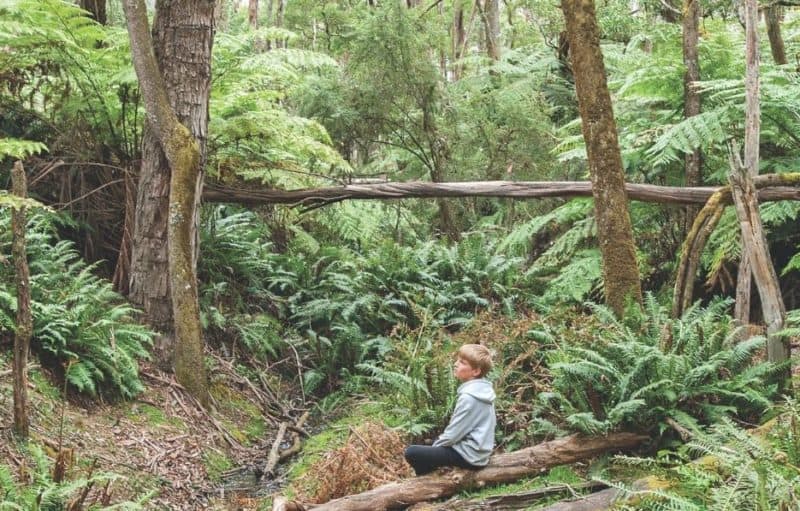Parks Victoria is asking for your response to its Greater Gariwerd Landscape draft management plan.
The draft has been jointly compiled by Parks Victoria and three Traditional Owner groups: the Eastern Marr, Gunditj Mirring and Barenji Gadjin communities. The plan covers Grampians (Gariwerd) National Park, Black Range State Park, and 15 nearby smaller reserves.
Submissions are due by this Sunday 24 January.
You can make a quick submission on the Engage Victoria website at engage.vic.gov.au/gariwerd-management-plan That site includes links to the draft plan, a summary of the plan, and more information.
or you can email a more detailed submission to [email protected]
The Engage Victoria site asks a number of questions, but they don’t cover all issues, so please add suggestions in the ‘further feedback’ boxes. (If you are responding to the draft plan on the Engage Victoria website, it is best to respond as an individual.)
Some suggestions for your submission:
Topic 1/ Significance, history and protection of the cultural landscape: Gariwerd, a living cultural landscape
You can offer your support for joint management with the Traditional Owners, the Eastern Marr, Gunditj Mirring and Barenji Gadjin people. Among other things, this will include increased employment for Traditional Owners, changing many inappropriate names of features and places to Indigenous language names, and increased presentation of the park as the culturally significant place it is.
Please add in the ‘further feedback’ box that you agree that Indigenous co-management must be consistent with the objectives of management for national and state parks in Victoria’s National Parks Act, and the management plan must be a plan that aims to achieve those objectives, especially environmental protection.
Topic 2/ Conserving and protecting biodiversity, ecosystems, landscapes and managing fire: Healthy Country
The plan is heading in the right direction here, but it should be stronger.
Climate change: There is no clear strategy to deal with growing climate impacts. That serious problem needs increased management funding and ongoing expert advice.
Fire management: Reference is made to trials of Indigenous burning, but fire management and impact monitoring is largely handballed to Forest Fire Victoria (FFV). Most of Grampians (Gariwerd) National Park and surrounding areas have been burnt far too often in recent years. Parks Victoria should be establishing clear protocols based on vigilant impact monitoring, and advising FFV of those protocols.
Deer Management: As the national park and nearby areas are an isolated area of bushland in an agricultural landscape, it would be possible to eradicate Red Deer and Fallow Deer if rigorous, well-resourced action was taken. The eradication of isolated populations of deer is consistent with Victoria’s deer management strategy.
Topic 3/ Visitor experiences, activities, facilities and access: Experiencing Gariwerd
Grampians Peaks Trail: There should be no built accommodation at campsites for the Grampians Peaks Trail (GPT). And while it is good to close unnecessary old tracks when new tracks are constructed, this should not become a strategy to force people onto the commercialised (and far more expensive) GPT.
Visitor numbers: As with most of Victoria’s parks, visitor numbers are increasing fast. The final plan should include a clear strategy to allow for rapidly growing visitor numbers while protecting the park from those impacts. The best strategies elsewhere (such as Tasmania’s Dove Lake bus transport) should be examined and implemented to avoid endlessly growing carparks within the national park.
Topic 4/ Camping, rock climbing and bouldering management: Experiencing Gariwerd
Rock climbing: It is important to support Parks Victoria’s careful reassessment of the environmental and cultural impacts of an out-of-control expansion of rock-climbing. The draft plan proposes a formal permit for all climbing and bouldering in the Gariwerd area. There are currently around 6,000 unofficial climbing routes in the park, in 281 distinct areas. Parks Victoria plans to reduce that to a still generous 1600 routes in 86 areas, to ban climbing for some 2000 routes in 66 sensitive areas, and review a further 2,500 routes in 126 areas. Licensed tour operators will have exclusive access to 50 climbing routes in three designated areas. Rock climbing should be managed like any other park activity.
Camping: While informal camping will end in the national park, there should be no reduction in free or low-cost camping opportunities.
Topic 5/ Community connections, interpretation, education and building a stronger knowledge base: Caring for Country together
Community education: There is a need to greatly increase community education about the natural and cultural values of the parks. This should include materials in a range of languages, designed to welcome people from Victoria’s many different cultural/language groups. Greater understanding of the purpose and value of national parks increases visitor co-operation in management of the area.
Research: Park management should be well-informed by knowledge, including Indigenous knowledge, scientific knowledge and the knowledge of experienced local naturalists. In particular, there is an increasing need for ongoing on-ground monitoring, and increased engagement with a broad range of ecological research programs.
